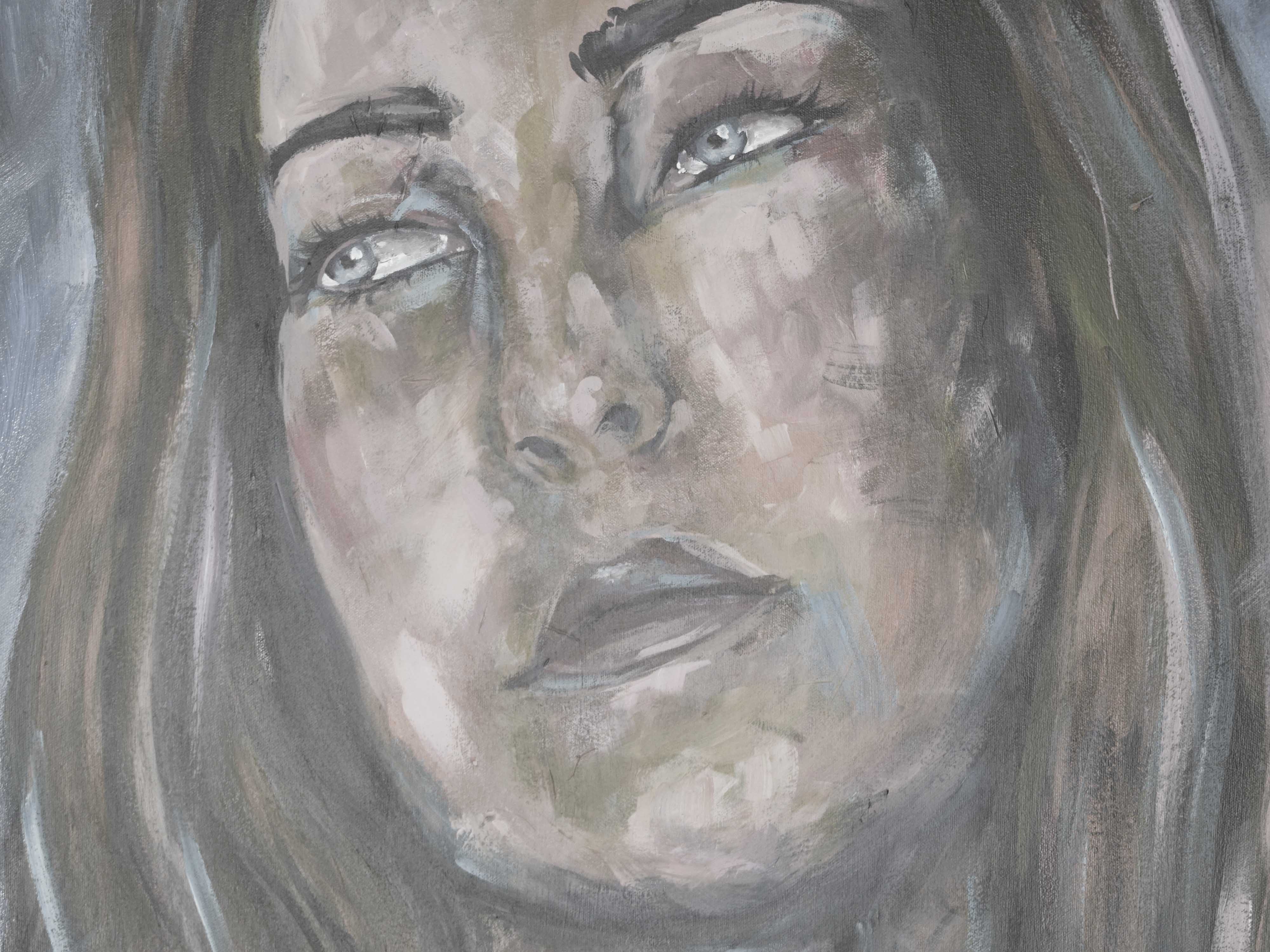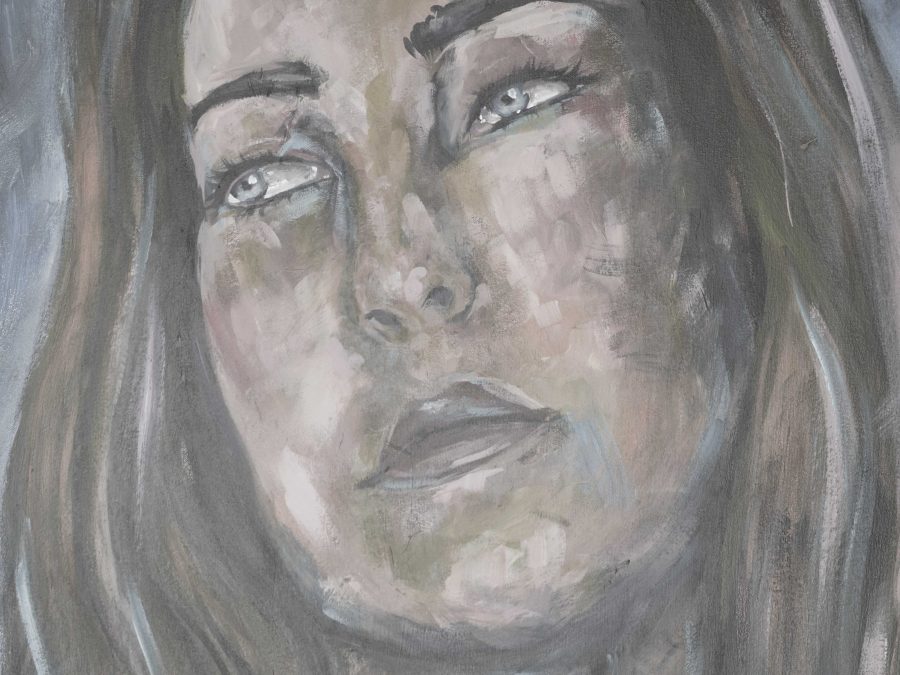Commentary: Are schools killing creativity?
Painting by: Callie Moerschell
November 2, 2016

Painting by-Callie Moerschell
Colors fade to grey…
The carpets are the color of dried vomit, the walls wear a blank face. The fluorescents above are weary- their light buzzes in a worn-out way, scattered and uncaring. The only splash of color are the bright red lockers that line the hallway.
Just walking into school is draining. The first step over the threshold feels like a resignation. Our brains are painted the same color as the dead walls. On the inside, we feel the way that the buildings look: dull, colorless, tired. Drained.
Art has told the story of the human experience since the beginning of time. Humans all have a natural want and desire to create, and procreate. Everything we know from the Victorian era, Ancient Greece, The Enlightenment era is based off the art that was created during that time. But in our schools systems today, it seems that art has been replaced by the need for capitalism and fear of not being as good as the people next door.
Art is looked at as a hobby or something to do in one’s free time, when time and time again creation prevails and sparks all the controversy that we care about today.
Schools choke the color of students’ thoughts; there are standards to be upheld, grades to be made. The effect is stifling. Schools are stifling students’ creativity.
“It happens in part because the dominant systems of education are rooted in the values and demands of industrialism: they are linear, mechanized, and focused on standards of conformity and standardization,” said Sir Ken Robinson, PhD, in a TED Talk. Robinson is an expert in creativity and education.
The structure of schools today cater to one type of student with little regard for the individual. Their purpose is to measure success in terms of standards- in EOC scores and state assessments, in PSAT results and STAAR testing. Teachers are given standardized “objectives” and “learning goals” to be achieved; their effectiveness as a teacher is measured in their students’ performance on tests.
“It’s not there to identify what individuals can do. It’s there to look at things to which they conform,” said Robinson.
The importance is placed on achievement, not on creativity and divergent thinking. There is a specific way of thinking that schools want to encourage; a specific formula to follow. Even arts classes consist of only about five to ten assignments a year, and every single one is extremely monitored and suppressed by the teacher or instructor.
In today’s education system, schools feel that the best way to make sure that “no child is left behind” is to keep them all together; they are a collective, a group, not individuals with different capacities for various skills and talents.
With this system, kids are all crammed into a one-size-fits-all box, and those who try to think outside it are ultimately hurt by it- and the schools are too.
“That structure alienates students, so that many drop out before graduating,” said Robinson, “If you have a system as in the United States where there’s a thirty percent dropout rate you can’t just blame the kids for it.”
Robinson also said in his TED Talk that we “grow out of creativity, not into it.”
As we grow up, the fear of failure and the terror of mistakes gradually consume us. We take less risks because we are more afraid of being wrong.
“We are now running education systems where mistakes are the worst thing you can make,” said Robinson. “And the result is that we are educating people out of their creative capabilities.”
We are taught as children that individuality is a good thing. That it’s important to stand out and be your own person. But the way we are taught says exactly the opposite: you are nothing if you can’t make the score, if you can’t learn in the style of the system, if you can’t be like everybody else.
“The number one thing that stifles any kind of creativity is focusing on a product and not the process,” said theatre arts teacher Sean Willard. “So a large number of students all passing a certain test instead of a large number of students learning more from where they started and where they are now. When we only focus on the product, we stifle creativity.”
This doesn’t foster a higher-level thinking; it fosters mechanized learning, memorizing facts to pass a test and forgetting them as soon as it’s over. Creativity is not being nurtured in schools today; it is being shoved aside for standardization and conformity.
“We are only allowed to express ourselves the way they allow,” said Gracie Gehring, a senior.
Students are not taught that there is excitement in trying new things, a triumph in the process of creating something, even if it doesn’t turn out quite the way it was supposed to; they are taught that life is just one long, hopeless fight against the fear of not being good enough.
It’s not the kids who aren’t good enough. It’s the system that teaches them they aren’t.
People need to stop discrediting art and realize what it does for culture, and time.
“Our task is to educate their whole being so they can face the future,” said Robinson. “We may not see this future, but they will. And it’s our job to help them make something of it.”





